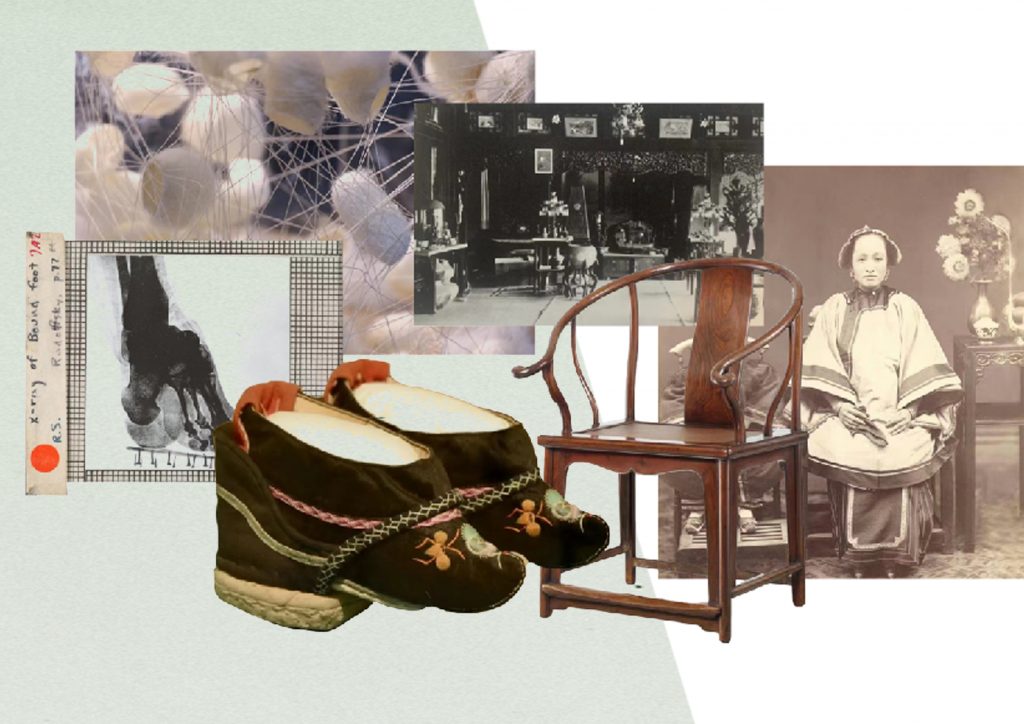In the second intervention, I found that everyday scenes allowed participants to relate more easily, but this connection remained largely at the cognitive level. They could recognize the social constraints behind the institution of marriage, yet they struggled to truly feel the presence of the body and discipline. Therefore, in the third intervention, I introduced more symbolic elements directly linked to these themes: the female body, marriage institutions, and social discipline.
Elements used:
- Images and metaphors of foot-binding
- Silk and textile materials
- Female portraits
- Traditional home furnishings
Each of these elements is closely tied to the body, gender, and marriage institutions. Through them, I hoped participants would more intuitively perceive the relationship between “marriage” and “the female body.”

Intervention process:
- Ask: “Looking at this picture, what is your first reaction?”
- Follow up: “Do you think this has anything to do with women’s lives or marriage?”
- Ask: “Have you ever thought about getting married?”
- Use the 5 Whys technique to keep probing and guide deeper reflection.
- Finally, ask: “After this round, has your understanding of marriage changed?”
Participants’ feedback:
- Group A (big cities, highly educated, feminist awareness)
- Participant Coco (23, Master’s student in the UK) admitted that she feared loneliness and viewed marriage as reliance and protection. But when she encountered elements symbolizing “bodily constraint,” she said the visual impact made her connect marriage directly with women’s restrictions and social discipline. She admired the independence of the self-combing women but confessed, “I can’t imagine living like that,”which further highlighted her dependence on marriage.
- Other participants mentioned that the symbols of foot-binding and the female body carried much stronger impact, prompting them to link marriage with bodily restrictions for the first time.
My reflection:
This intervention was more impactful than the previous two. Participants not only reflected on marriage cognitively but also began to feel, through bodily symbols, a sense of being “bound.” Compared with historical imagery and everyday scenes, this round evoked stronger emotional resonance.
However, I also realized that relying solely on images is still limited. While they could provoke association and emotional reactions, they fell short of producing a truly immersive experience. This made me think: what if participants could see a body gradually being bound? Would that make the sense of constraint even stronger? My next plan is to create an immersive installation based on this image.
Leave a Reply